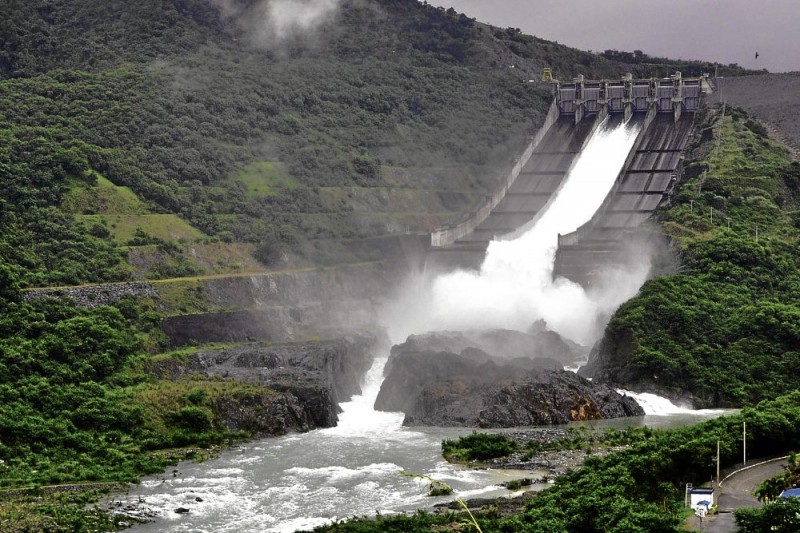Fierce winds, heavy rain pound North; San Roque to release water
DAGUPAN CITY, Philippines — Powerful winds and heavy rain slammed north Luzon from Wednesday night to Thursday morning and prompted the San Roque Dam in San Manuel, Pangasinan, to start discharging water into the Agno River at 10 a.m. Thursday.
Virgilio Garcia, hydrologist of the National Power Corp., said that about 20.2 millimeters of rainfall had been observed in the Agno River basin in the last three hours and water had been flowing into the dam at a rate of 1,192 cubic meters per second (cms).
One cubic meter per second is equivalent to 1,000 liters or five drums of water.
Garcia said that as of 5 a.m., water level at the dam’s reservoir was 277.35 meters above sea level (masl), which is 2.65 meters below its normal high water level of 280 masl. The dam can accommodate water up to 290 masl.
Since Sunday, the dam’s hydroelectric power plant had been on a “must-run” mode, generating 435 megawatts (MW) of power and releasing water through its turbines at the rate of 275 cms.
Article continues after this advertisementAs a peaking plant, the power plant normally produced power for the Luzon grid during peak hours from 9 a.m. to 3 p.m. and from 6 p.m. to 8 p.m.
Article continues after this advertisementAs of 5 a.m., the Ambuklao and Binga dams at the upstream of the Agno River in Benguet province were still spilling water.
The water level at Ambuklao was 751.69 masl, barely 31 centimeters (cm) below its maximum level of 752 masl. With its spillway gates open at a total height of 14.5 meters, the dam had been spilling water at 1,843 cms.
The water released by the Ambuklao is collected by the Binga Dam. Binga’s water level was 573.88 masl, about 2.12 meters below its maximum level of 575 masl. Binga dam’s spillway gates were raised by 15 meters, spilling water at the rate of 1,948 cms.
Five ships were sighted straying towards the Tondaligan Beach in this city. Main roads have been flooded. Yolanda Sotelo/CBB
